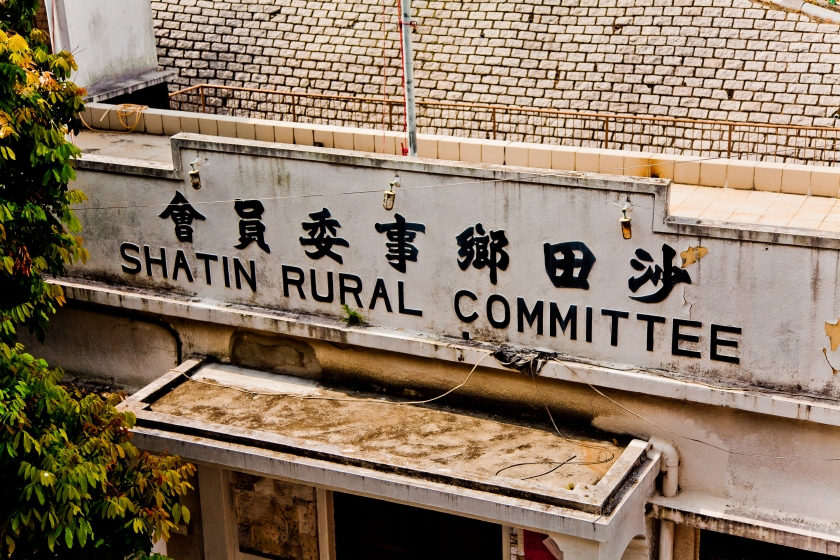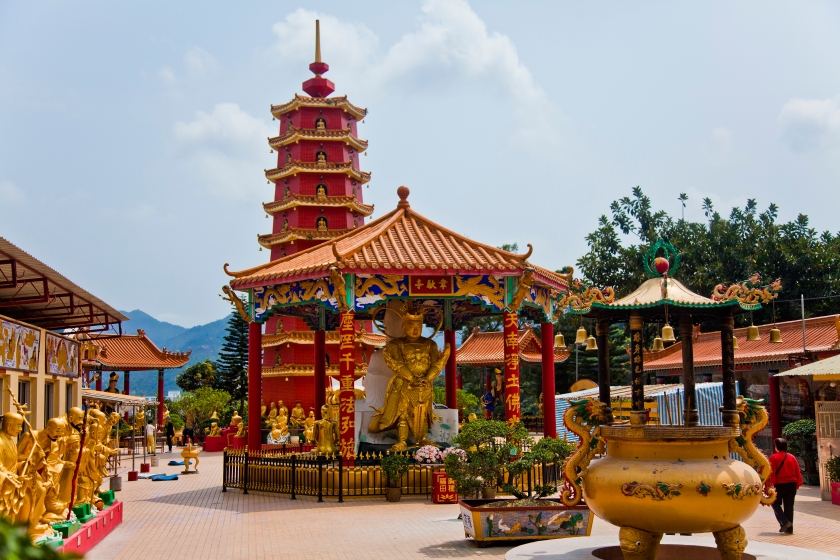РУССКОЯЗЫЧНАЯ ВЕРСИЯ ПО ЭТОЙ ССЫЛКЕ. CLICK HERE FOR RUSSIAN VERSION.
29 March 2012, Thursday
In the morning, as our moods revived after the previous night’s episode of depression, we decided to act at our own risk and choose the route ourselves, using maps, Google and common sense.
We stopped our choice on the Ten Thousand Buddhas (Man Fat Sze) Monastery, situated in the New Territories. They are located on the mainland, north of Kowloon, and are not included in the bus tour routes. We were about to cross the entire Hong Kong from south to north.
First thing, we provided ourselves things to do for the next day, entrusting ourselves to the same company we had been touring around the city with so far (Big Bus Tours), and booked a day trip to the Lantau Island.
We took the MTR from the Central station and had to make two changes before we got to the point of our destination – the Sha Tin area, where the monastery is located.
A journey on the tube is always a good opportunity for observing the locals and drawing conclusions. Thus, we noticed that the local Chinese consumed much less garlic than Beijingers, or, in any case, clearly concealed it. As you enter any public place in Beijing you almost suffocate with its “delicate fragrance”, but here you don’t really feel anything.
What also draws attention is the technophilia of Hong Kongers – everyone in the tube is busy with their phones, iPads, readers, PSP’s and other gadgets of the latest models. To the credit of the locals it should be mentioned that a young man gave his seat to me.
At Sha Tin there was a bit of a hitch: we thought that the monastery was one of the tourists’ favourite places and we would see a lot of signs which would easily lead us to the right place. But no! We looked around, walked along a street, which seemed to be the only one (it was very broad, much broader than in the city centre), following the crowd coming out of the tube. Only then did it dawn on us that it was quite unlikely for such a broad modern street to lead to a Buddhist monastery.
After asking a couple of people in the street, we realised that we should go back to the station and make a second attempt.
It turned out that there was a trail, which we hadn’t noticed the first time, leading to the monastery. As we walked a bit, we came up to gates with a univocal sign, notifying that the steps before us were in fact the road to the monastery. The number of steps was simply enormous, but the road itself was quite amusing: on both sides there were thousands of gilded statues of Buddha, standing, sitting in different poses, with different facial expressions. Right at the beginning of the road we were snapped up by two Buddhist monks who mumbled something, pressed some rosaries to our foreheads, put some bracelets on our wrists and clearly hinted that they would like to receive some alms. There was nowhere to escape, and each of us had to part with hundred Hong Kong dollars. As we walked substantially further, we noticed a sign warning that real monks wouldn’t beg, so, they said, beware of fake monks. Something felt a bit hypocritical about this sign; as if it were impossible to put it right at the entrance!
Once again I should mention that climbing all the way up to the monastery was really uneasy. But even if I make this statement for the third time, still, this would be much easier to write about than to actually overcome. We did it though!
Interestingly enough, on the territory of the monastery itself we didn’t notice even a single monk – neither a real, nor a fake one. There were, however, cleaners, polishing the statues with rags; waterers, and other staff. By the way, it has to be mentioned that all the captions under the statues were made exclusively in Chinese, and only two boxes of ginseng ficus were neatly signed in English, from which one can conclude that this place is mainly visited by Chinese Buddhists and English-speaking botanists 🙂
Inside the temple taking photos is not allowed. One could think that the Ten Thousand Buddhas are only those statues on both sides of the road. In fact, they are right in this temple: each wall has numerous rows (we counted 31) with small statues of Buddha.
In the yard there were statues of different deities, a high pagoda and incense burners. Actually, there were quite few tourists; the majority of the visitors were believers who had come to pray. They burned incense sticks, made wishes and read some books.
Apart from spiritual food, physical food was also present there, although purely vegetarian. Right there, in the yard, was an eatery, where just for 48 HKD you would be served a tremendous portion of whatever you had ordered (soup, for example, wasn’t served in bowls, but rather in basins!). Chicken, fish and lamb appeared in the menu, but all with the “veggie” prefix, meaning they were probably made of soy. As for vegetables and mushrooms, they were real, of course. And everything was delicious!
Well, needless to say, that the way back was much easier, as we were walking down the hill. Overall, we spent an hour to get there, two hours in the monastery, and a bit more than an hour to get back.
















The pics look amazing!
Thanks a lot!
Hey, this looks like something I’d like to see during my stay. Any chance you still know the directions a bit?
I’m afraid I have forgotten already… I definitely remember it was quite close to the Sha Tin station, and I also remember turning left at the station exit and then turning left again, away from the broad busy street. But seems like that’s all I remember, sorry 😦
No prob! I’ll try using googleMaps in that region. I’m sure I can figure it out 🙂